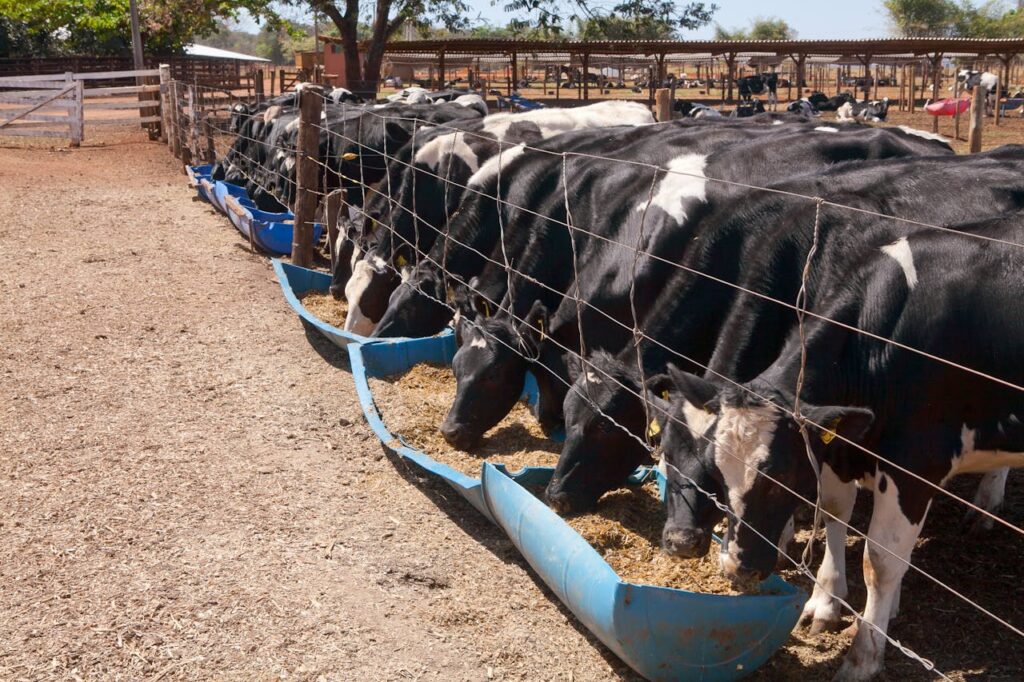Milk Withdrawal Times for Common Antibiotics in Cows
When administering antibiotics to dairy cows, it’s essential to consider the withdrawal period—the time required after treatment during which the milk must not be consumed. Here are some common antibiotics and their associated withdrawal times:
Ivermectin
Milk Withdrawal Time: Depending on the time of treatment within a 12-hour milking cycle, the last milk to be discarded may be from the milking at any time point at or after 96 hours after treatment but earlier than 108 hours after treatment. In this example, milk from the first milking at or after 108 hours is considered safe1.
Ampicillin
Milk Withdrawal Time: Ampicillin withdrawal periods can vary. Some are very short (1 or 2 days), while others are longer (7-10 days). If ampicillin is used in a lactating (milking) animal, the withdrawal period must be determined for both meat and milk2.
Penicillin G (Procaine) / Dihydrostreptomycin
Milk Withdrawal Time: Penicillin G (procaine) and dihydrostreptomycin are commonly used intramammary antibiotics at dry-off. The withdrawal period for these antibiotics should be followed according to veterinary guidance2.
Cephapirin
Milk Withdrawal Time: Cephapirin is another intramammary antibiotic used during dry-off. Its withdrawal period should be determined based on treatment protocols2. As a guide, it can be 4-5 days.
Streptomycin
Streptomycin is an antibiotic commonly used in veterinary medicine to treat bacterial infections in dairy cows.
Milk Withdrawal Time: The withdrawal period for streptomycin in milk depends on the specific treatment regimen, dosage, and individual cow health. As a guide, the withdrawal period is typically around 48 hours (2 days) after the last administration of the drug.
Additional Withdrawal Times
a. Dexamethasone
Dexamethasone is a corticosteroid used in veterinary medicine. The withdrawal period for dexamethasone in milk depends on the specific treatment regimen and dosage. Consult with a veterinarian for precise guidance.
b. Banamine (Flunixin Meglumine)
Banamine is a non-steroidal anti-inflammatory drug (NSAID). The withdrawal period for Banamine in milk varies but typically falls within the range of 24 to 48 hours.
c. Ceftiofur
Ceftiofur is a broad-spectrum cephalosporin antibiotic. The withdrawal time for ceftiofur in milk is usually around 3 days.
Detecting Antibiotic Residues: Strip Tests
In addition to adhering to withdrawal periods, there are practical tools available to detect antibiotic residues in milk. Strip tests, such as Neotest, provide real-time guidance on the suitability of milk for processing. These commercially available rapid test kits allow dairy farmers, milk purchasers, and processors to assess milk safety efficiently.
How Strip Tests Work:
- The test device typically comprises a lateral flow strip that is read visually.
- Modern advances in technology have enabled rapid lateral flow test strips to screen for up to 4 Antibiotic Groups on the same strip in under 10 minutes2.
- Neotest strip tests allow for on-site testing with results ready in less than 5 minutes.
4. Importance of Strip Tests in Antibiotic Residue Testing
- Ensuring Safety: Strip tests help ensure that milk products are free from antibiotic residues, safeguarding consumer health.
- On-Site Analysis: These tests can be conducted on-site, providing immediate results.
- Compliance: By using strip tests, dairy producers can comply with regulations and maintain the quality of their milk.
Remember, accurate withdrawal periods and the use of strip tests contribute to safe dairy products and maintain consumer confidence. As responsible stewards of animal health, dairy farmers play a critical role in ensuring the safety of our food supply.


